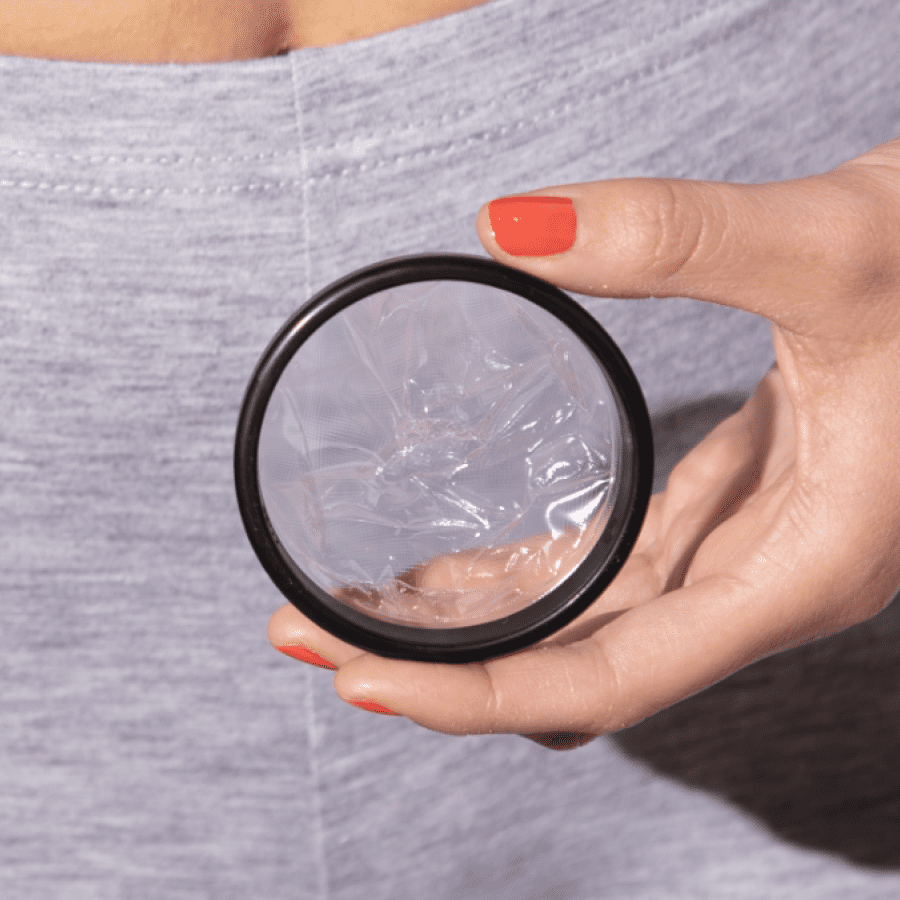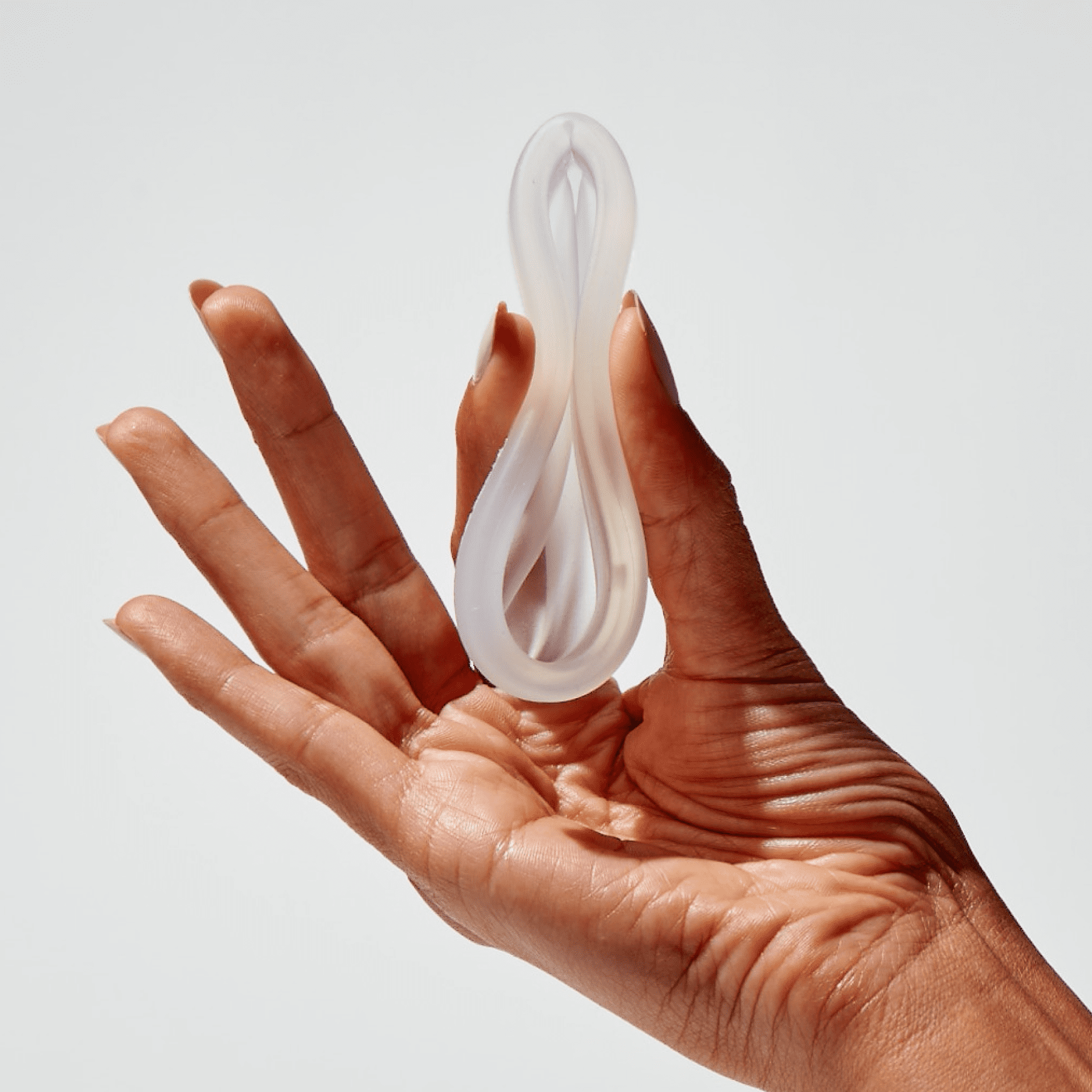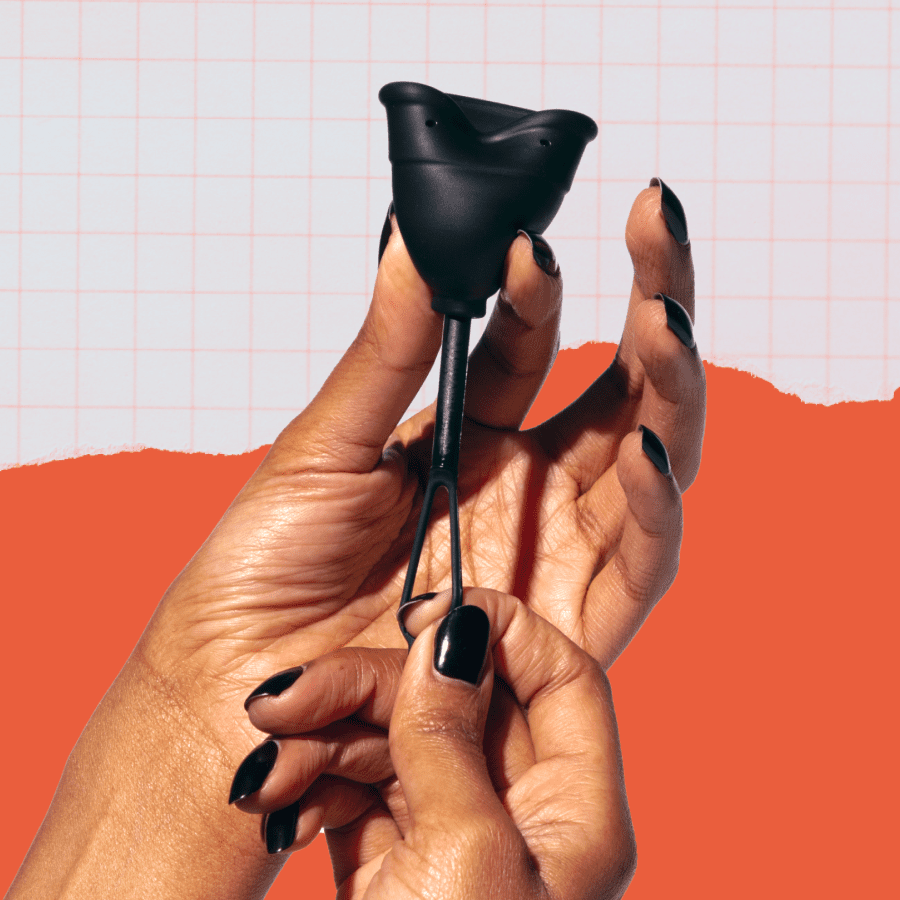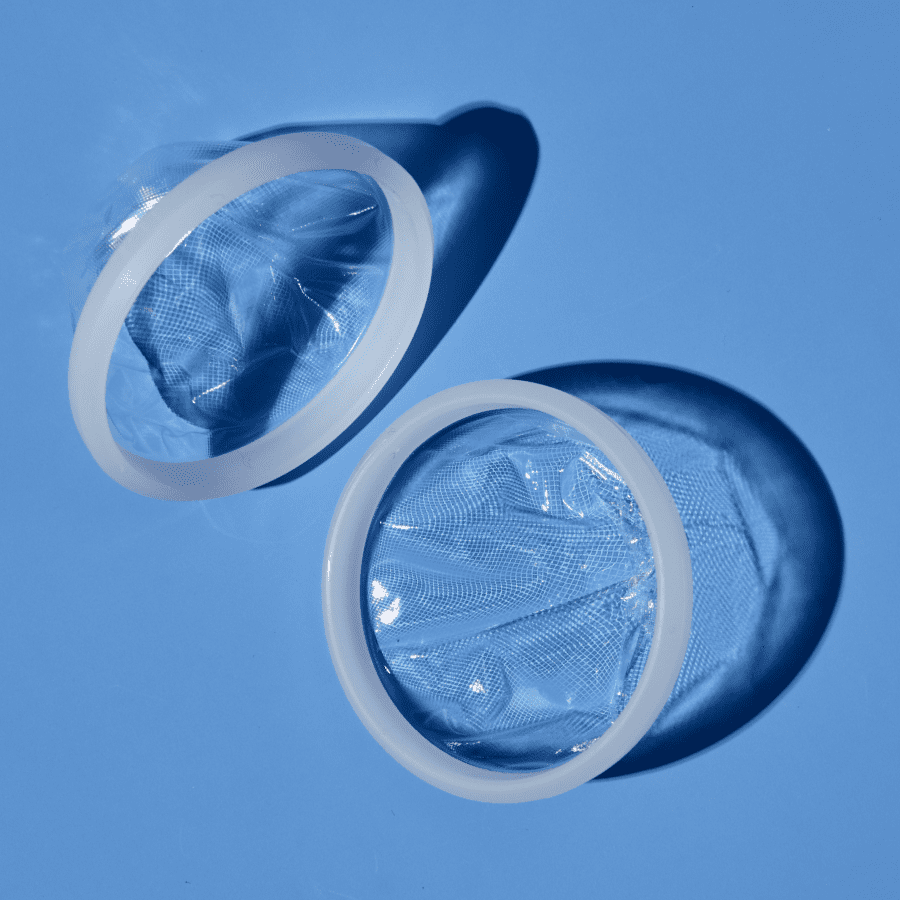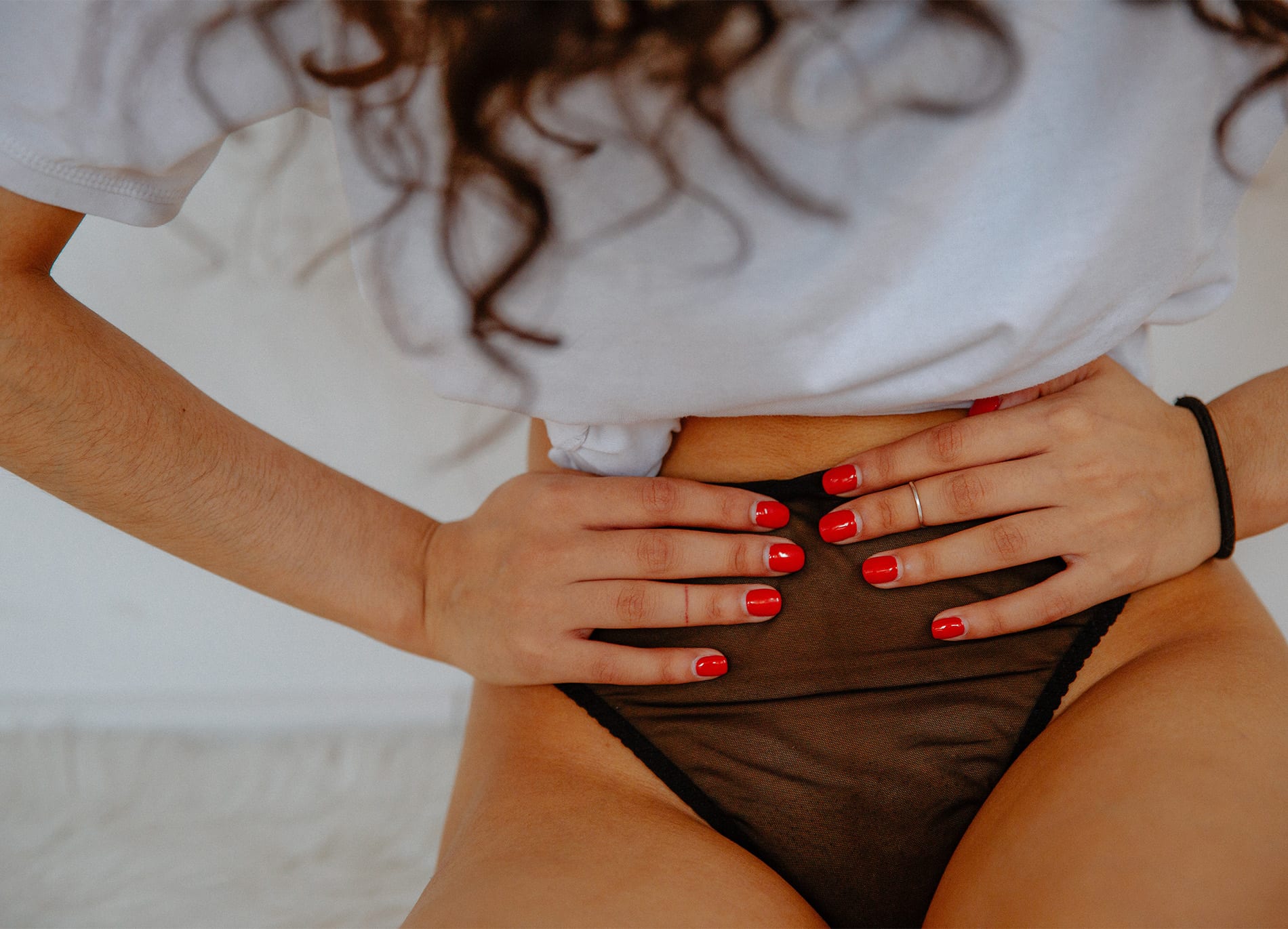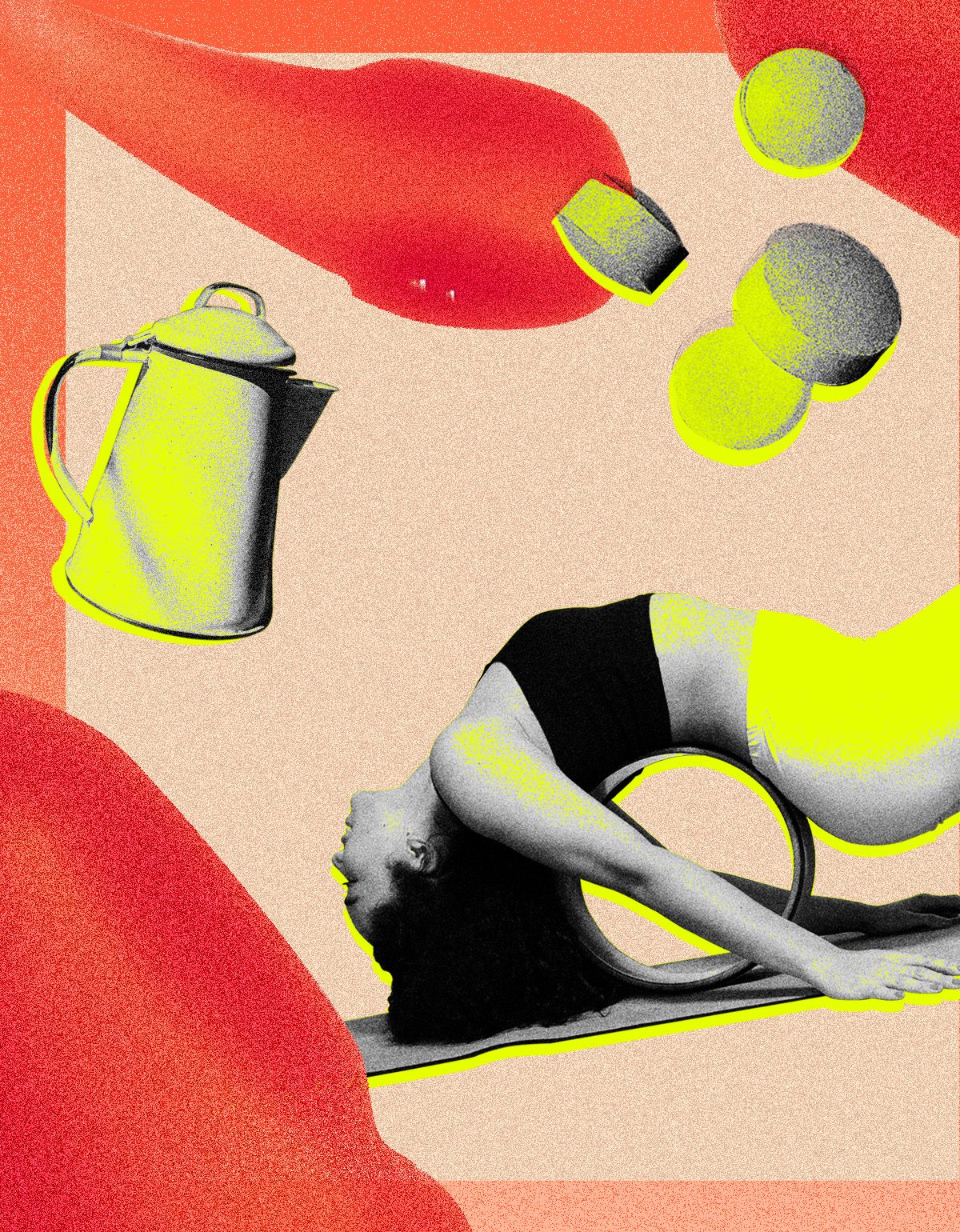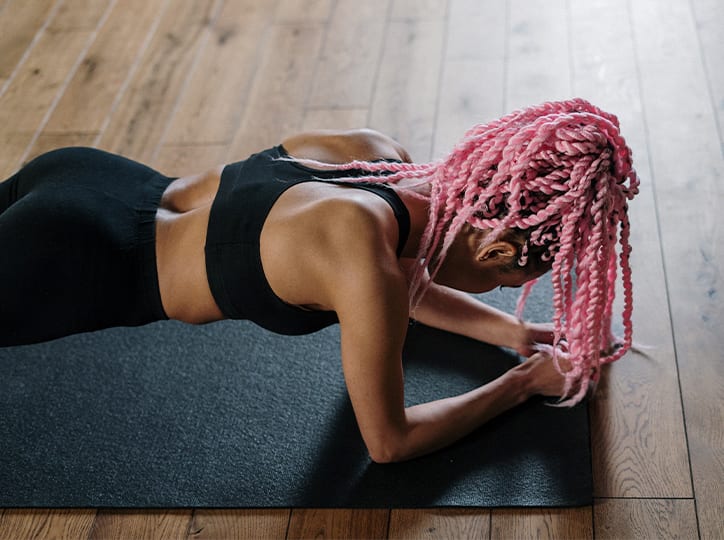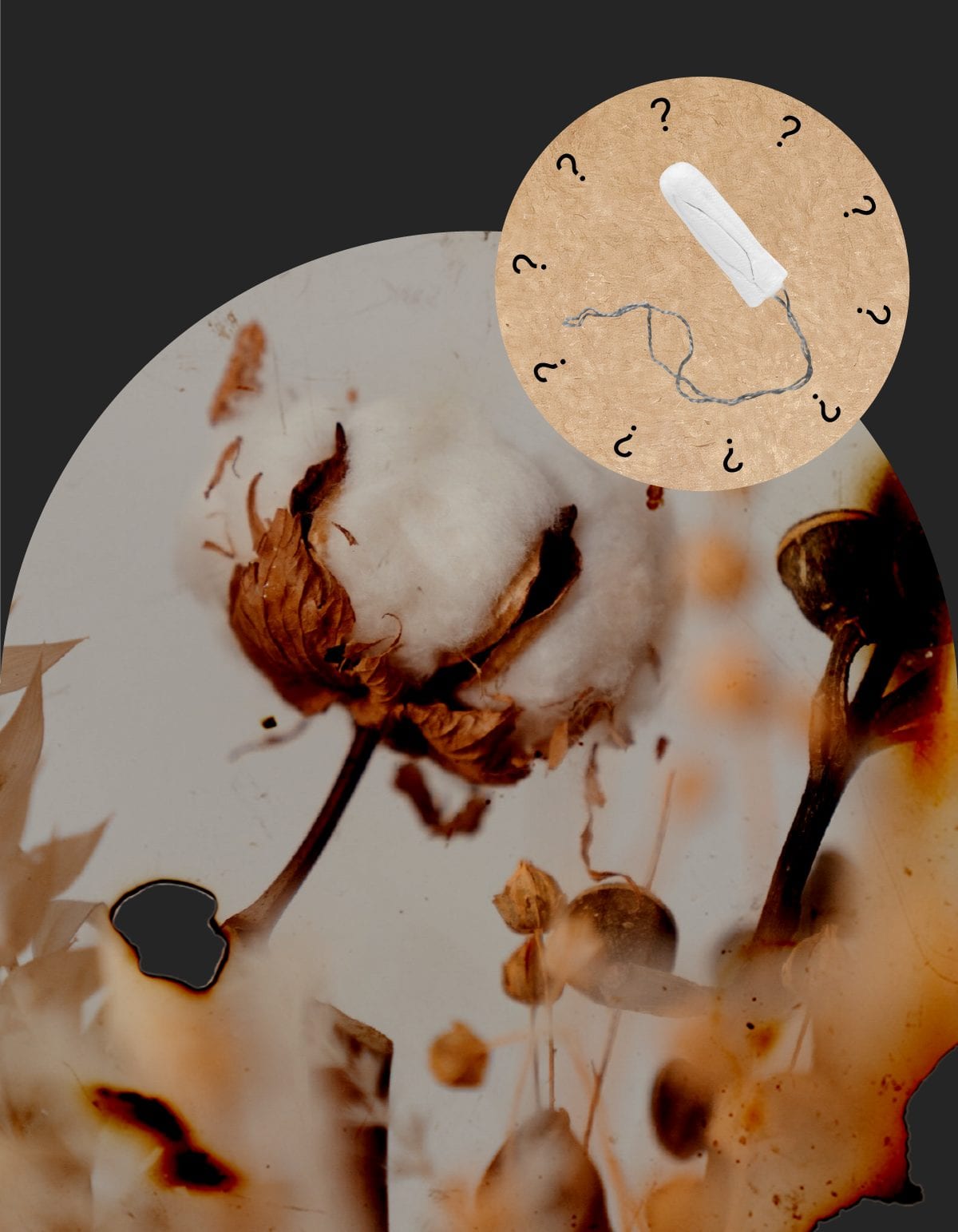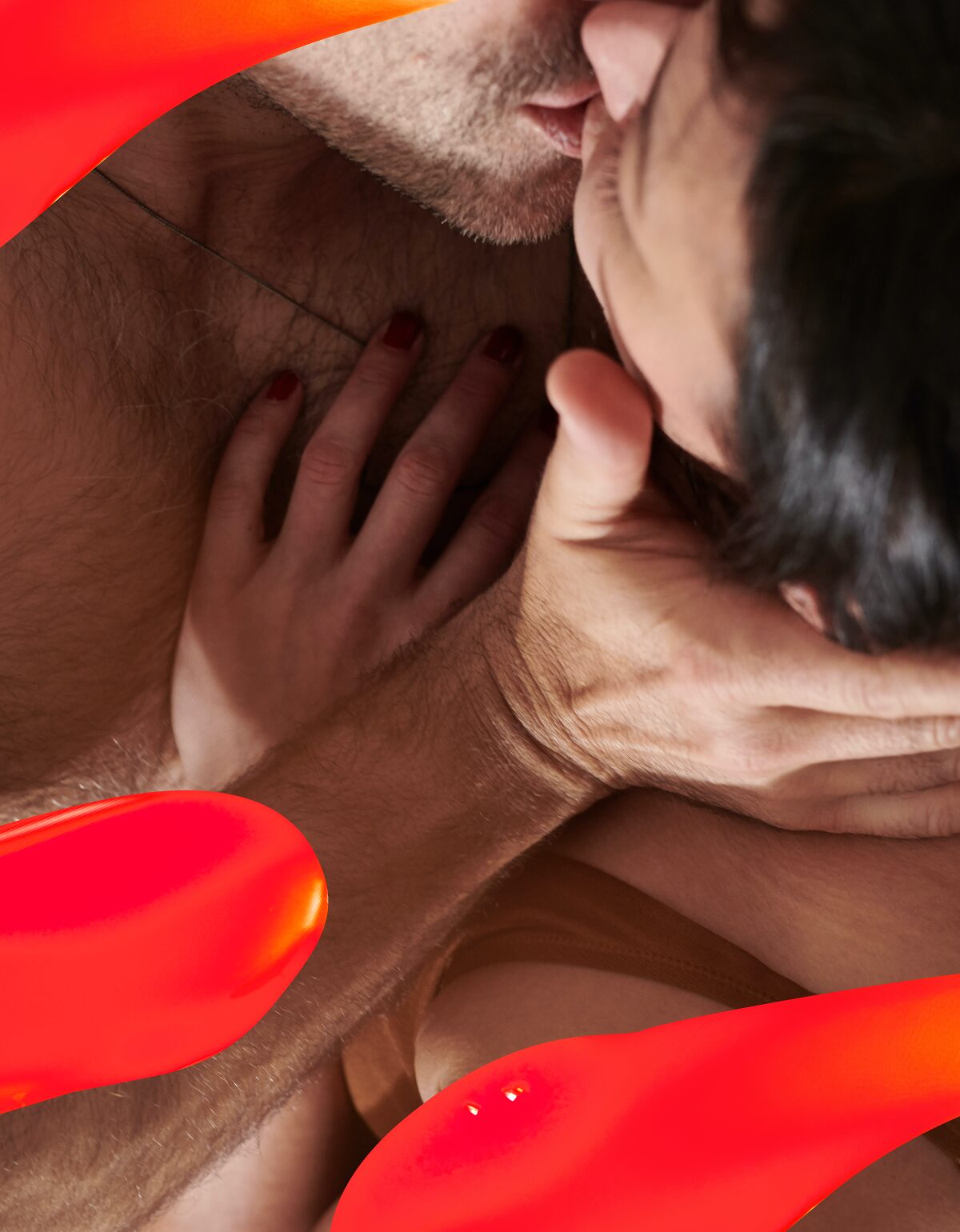Do tampons make period cramps worse?
If you asked a group of people about their least favorite thing about having a period, you’d likely hear “cramps…” from at least a few.
Period cramps are never any fun. For some, they can be so intensely painful that they stop a day full of errands and activities in its tracks. With very little notice, we’ll go from “ready to take on the day” to “I’m literally never moving off this heating pad.”
Thankfully, we’ve come up with dozens of hacks, tips, and bits of medically-proven advice for battling cramps. Knowing the right medication to take, foods to eat, and self-care to try can all make a huge difference. But when it comes to dealing with truly awful cramps, one thing that’s often overlooked is the impact of the period product you’re using.
Tampons have long been considered a step up from pads in terms of convenience: There’s no bulky padding, we can swim with them, and they come in a variety of sizes to match our flow. But they also have some downsides: They carry a risk for TSS, which increases with the tampon’s absorbency. 1 They have a tendency to leak. And for many, they seem to exacerbate period cramps.
Most of us have heard about or even experienced what feels like increased pain or cramping when using an internally-worn period product, especially tampons—but is there a medical basis for this phenomenon? Can we actually state that tampons make cramps worse? Or is the evidence out there purely anecdotal? Read on to find out.


How period cramps happen in the first place
Period cramps are the painful uterine contractions that occur before and/or during the menstrual period. They’re triggered by chemicals that your body produces called prostaglandins. Prostaglandins are made in the lining of the uterus; they cause the muscles and blood vessels of the uterus to contract. 2 Because prostaglandin levels are highest earlier on in the menstrual cycle, you normally experience cramps at the beginning of your period that go away after a few days.
For most menstruators, cramps are a normal and expected part of having a period. They may be uncomfortable, but they shouldn’t be so bad that they interfere with daily life—and when they do, we use the term dysmenorrhea to describe them.
According to the American Academy of Obstetricians and Gynecologists, more than half of all women will experience mild cramps for 1 to 2 days of their period. 2 Dysmenorrhea, on the other hand, “has been reported as the most common causes of regular absenteeism among young women” and “accounts for significant lost wages and diminished quality of life.” 3 4
Dysmenorrhea can cause severe pain that’s felt in the pelvis, abdomen, lower back, or even the upper legs. Some individuals report pain or sensitivity in the vulva, as well.
There are two types of dysmenorrhea—primary and secondary:
- Primary dysmenorrhea is “painful menstruation with no detectable organic disease.” 3 It usually starts out a few days before or even the day of your period, and resolves once you’ve stopped bleeding. Primary dysmenorrhea is generally attributed to higher levels of prostaglandins—according to German research portal Bionity, “Prostaglandin levels have been found to be much higher in women with severe menstrual pain than in women who experience mild or no menstrual pain.”
- Secondary dysmenorrhea is period pain that’s attributed to an underlying condition in the reproductive tract, such as endometriosis or pelvic inflammatory disease. Sometimes, non-reproductive medical conditions such as Crohn’s disease or urinary disorders can also contribute to secondary dysmenorrhea. 2 According to Bionity, “The pain associated with secondary dysmenorrhea is not limited to the time around mensesAnother term for menstrual flow (commonly known as your period). as with primary dysmenorrhea. Also, secondary dysmenorrhea is less related to the onset of bleeding in menstruation, is seen in older women, and is associated with other symptoms like infertility.”
Can tampons cause cramps?
Now that we know how period cramps happen, let’s tackle the key question at hand: Do tampons have an effect on period cramps? Do they play a role in making period cramps feel worse?
For people with primary dysmenorrhea, prostaglandins are the main culprit behind painful cramps. As we mentioned earlier, people who suffer from severe period pain tend to have naturally higher levels of prostaglandins.
We know for certain that tampons don’t impact prostaglandin levels. So, we can’t say that tampons “cause” cramps—but they could make the cramps you already have feel worse. According to Bionity, “Some women also find that use of internally-worn menstrual products, such as tampons and menstrual cups, exacerbate menstrual cramps and pain.” 5
Tampons are usually made from a blend of cotton and rayon or pure cotton. They work by absorbing menstrual fluid and, as we know, are worn in the vaginal canal. As tampons absorb fluid, they expand. In doing so, they put pressure on the vaginal walls. 1 It’s possible that this pressure could make an already-painful situation feel worse.
While menstrual cups don’t expand while they’re worn (they’re made from silicone and collect, rather than absorb, your period), they do put pressure on the vaginal walls. Cups are also worn in the same part of the vagina as a tampon—generally quite low down and not far from the vaginal opening.
Since 90% of the vagina’s nerve endings are located near the vaginal opening, it’s possible that the placement of cups and tampons in a nerve-rich area sets the stage for increased discomfort when experiencing cramps. 6
Using a period product that is worn higher up in the vaginal canal, like a menstrual disc (worn in the vaginal fornix), has anecdotally been found to reduce cramping or make existing cramps more bearable than when using tampons. This is in part because the vaginal fornix and upper portions of the vaginal canal have far fewer nerve endings. 7
Lastly, tampons are made with rigid cotton. They don’t bend or flex when you move around—like when you go for a jog or flow through a sun salutation in yoga class. And they don’t have any “give” when your uterus contracts, either. It’s possible that the rigidity of tampons (especially when compared to the relative flexibility of a product like a menstrual disc or cup) contributes to the increased discomfort and cramping people report when wearing them.
Tampons & period cramps: Anecdotal evidence
The scientific answer is out of the way: Prostaglandins cause cramps, not tampons.
But how do we reconcile this with the many accounts from people with periods that tampons do, in fact, lead to cramping? We often hear from menstruators who claim something along the lines of “My cramps are never that bad when I’m using a pad or period underwear, but as soon as I insert a tampon, I’ll get awful cramps out of nowhere.”
We scoped out Reddit to investigate further. Here’s what we found.
One user felt that the cramping had to do with a subconscious effort to keep a tampon from falling out:
“I found out I was subconsciously squeezing my inner muscles. I was apparently trying to keep the tampon from falling out, even though I never, ever had one fall out. I was getting severe cramps from it. My way of training myself to not do that was to also wear a little panty liner, ‘just in case,’ and then consciously relax. I was ‘allowing’ the tampon to fall out if it ‘wanted’ to. It never did.”
Another user mentioned a sensation of extra weight, which could be due to the tampon’s expansion and resulting pressure:
“It was not cramping per se, but I always felt more uncomfortable with tampons, like I felt there was some ‘weight’. It was weird!”
A third user theorized that her vagina was already swollen and sensitive during her period, making any internally-worn product uncomfortable. According to Ob/Gyn Dr. Jane van Dis, this suspicion is actually true: “The vagina becomes more sensitive during menstruation in response to the hormones and prostaglandins released at that time,” she explains.
“I honestly can’t wear tampons for the first day of my period cause it makes the cramping way worse. My theory is that the inside of my vagina is so swollen and sore that sticking something in there is just out of the question.”
In the same vein:
“Tampons always make my cramps worse. I just figure it’s because my bits don’t want ANYTHING stuck up there during that time of the month. If I’m having a really bad cramp cycle I’ll just use pads so as to not make them worse.”
Finally, one user noted that “Certain brands of tampons cause me to cramp differently.”
It could be that different tampon brands vary in size or rate of expansion—and that some contain trace amounts of chemicals that cause allergic-type reactions. Or, perhaps, higher-absorbency tampons increase preexisting pain or sensitivity.
Interestingly, some Reddit users reported a reduction in cramping when using a period cup versus a tampon:
“I always try to use my cup, but every once in a while I don’t have it with me or it’s not sanitized at the beginning of my period and I have to use a tampon or two. Usually my cramps are nonexistent, except when I have to use a tampon. It’s a noticeable difference and it almost always happens.”
“I too went the route of the cup, and it was wonderful. No cramping like I had with tampons, no leaking, and the freedom to wear anything.”
Because a menstrual cup doesn’t expand while you wear it, the pressure it puts on the vaginal walls stays consistent. It’s possible that the increased cramping reported with tampons has less to do with baseline pressure, and more to do with pressure that increases as time goes on (i.e. as the tampon expands).
Tampons & pelvic pain: Underlying conditions
Sometimes it can be difficult to decipher whether it’s your period product or some other underlying cause that’s making your period cramps worse. Sometimes, it’s a combination of those factors: Certain medical conditions can cause more painful cramps than usual and make tampons uncomfortable to wear.
If your period cramps last longer than a few days or don’t resolve after taking ibuprofen (like Motrin or Advil, which are effective at blocking prostaglandins), it’s a good idea to reach out to a healthcare provider or your Ob/Gyn to rule out any underlying conditions.
A few of the conditions associated with painful tampon use include:
- Vulvodynia, a condition that causes chronic pain or discomfort around the opening of the vagina or in the vulva. Vulvodynia can make it uncomfortable to sit and can make sex painful. It’s still not clear what causes vulvodynia but some factors that may contribute to it include injury to the nerves around the vulva, past vaginal infections, allergies or sensitive skin, or muscle spasm in the pelvic floor. 8 Because of these factors, inserting a tampon and/or wearing a tampon can feel painful and may make symptoms of vulvodynia worse.
- Vaginismus, a condition that causes the vagina to tighten upon insertion or penetration. Anything from a tampon to a speculum inserted during a pelvic exam to penetration during sex can trigger symptoms. Vaginismus is involuntary (meaning the muscle contraction takes place without any conscious effort) and it is often a fear-based response to vaginal penetration. Treatment may focus on psychosexual therapy, relaxation techniques, pelvic floor exercises, and sometimes vaginal trainers to help you gradually with vaginal penetration. 9
- Endometriosis, a condition that affects up to 10% of people AFABAFAB stands for “assigned female at birth.” of childbearing age. 10 Endometriosis is characterized by the growth of endometrial-like tissue outside of the uterus, often in other parts of the pelvis or surrounding other reproductive organs. This condition may cause severe period pain (secondary dysmenorrhea) and heavier periods. The widespread pelvic pain that can be experienced with endometriosis makes tampon use uncomfortable for many.
- Pelvic inflammatory disease (PID), an infection of the reproductive organs that is sometimes caused by recurrent or untreated sexually transmitted infections. 11 PID may cause pain or bleeding during sex and can make tampon insertion uncomfortable. When treated early, PID can be resolved with antibiotics. If you have pelvic inflammatory disease, be sure to get tested for sexually transmitted infections and keep your sexual partner or partners informed.
What period products are best for cramps?
Our vaginas come in all shapes and sizes—which means there’s no one-size-fits-all approach when it comes to period products. For some, tampons may work just fine depending on the size and brand. Others may not be able to tolerate a tampon at all during their period.
If your cramps are especially severe, here are some of our favorite tampon alternatives:
Menstrual discs
A menstrual disc, such as Flex Disc, is a great alternative to tampons for those who experience severe cramps. Instead of sitting inside the vaginal canal, the disc sits in the vaginal fornix—all the way at the back of the vagina, just below the cervix.
The cervix contains few nerve endings, which means nearly all disc users won’t feel it once inserted. Compared to the cervix and vaginal fornix, the lower portion of the vaginal canal—where a tampon is worn—is much more sensitive and prone to irritation. 7
The disc also catches five times more blood than a super tampon and can be worn for up to 12 hours, which translates to fewer trips to the bathroom for changes. Unlike tampons, Flex Disc is made with medical-grade polymers that are engineered to warm up to your body temperature when inserted and mold to your unique anatomy, creating a custom fit.
Where a tampon expands and puts constant pressure on your vaginal walls, a disc moves with your body when your uterus contracts. This is one of our favorite features of Flex Disc (and one of the key reasons the disc is so comfortable). Over 64% of surveyed users reported less cramping with Flex Disc than with their previous period product.


A menstrual cup (maybe)
If you’re looking for a tampon-like product with longer wear, a menstrual cup could be a great alternative, as well. While it may not be as cramp-friendly as a disc, users often report less discomfort when wearing a menstrual cup versus a tampon. Plus, cups are 100% reusable—so they’re better for the planet (and your wallet).
Keep in mind that menstrual cups are worn in the vaginal canal and do exert pressure on the vaginal walls. They’re held in place with suction and need to be placed correctly for maximum comfort. If they’re inserted too far up, they can suction to the cervix. While this isn’t harmful, it’s not the best feeling!
Once you’ve mastered the placement of your cup, you’ll notice that it’s less rigid and provides a gentler feel than a tampon. Flex Cup, in particular, is made with soft, medical-grade silicone—so it won’t irritate your vagina during removal, even on your lightest days. Flex Cup also features a one-of-a-kind pull-tab that breaks the seal for you during removal. AKA, you can remove it just like a tampon.
If you have especially severe cramps, you may find that the positioning of a menstrual cup doesn’t work for you. We generally recommend a menstrual disc over a cup for users with secondary dysmenorrhea or those who experience extreme pelvic pain. However, the best way to find out what’s most comfortable for you is through trial and error.


Pads and period underwear
Some menstruators find that they can’t tolerate any internally-worn products when their cramps are at their worst—if this is you, you’re not alone! Nowadays, there are many different pad alternatives on the market, including reusable pads, period underwear, and pads made with organic cotton. Just make sure to change your pad or period underwear regularly (every four hours is ideal) to avoid odor and keep your vaginal pH happy.
Key takeaways
Are tampons to blame when it comes to our period cramps? “Yes, possibly,” says Ob/Gyn Dr. Jane van Dis. Tampons do not cause period cramps directly, but anecdotal evidence shows us that they might increase discomfort when you already have cramps. It all ties back to these three factors:
- Tampons expand in size as they absorb your period blood, which means they apply increasing pressure to the vaginal walls while they’re worn
- Tampons are made with rigid cotton that doesn’t bend or move with your body when your uterus contracts (whereas a product like a menstrual cup or disc is made with flexible materials)
- Tampons are worn in the lower part of the vaginal canal, where there is a greater concentration of nerve endings (whereas a menstrual disc is worn in the vaginal fornix, where there are few nerve endings)
Remember: Both size and placement impact period product comfort, especially in products that are worn lower in the vaginal canal. Some people experience less cramping with smaller or lower-absorbency tampons than with high-absorbency tampons. The same principle applies to menstrual cups. Size is less of a factor when looking at a menstrual disc, however, because discs are worn in the vaginal fornix.
The period product that works best for you will depend on what causes your cramps or discomfort (i.e. primary dysmenorrhea vs. vulvodynia vs. another underlying condition) and what fits your internal anatomy. No two vaginas are exactly alike. When testing out new period product options, keep an open mind: Just because one product isn’t working for you doesn’t mean another one won’t be a good fit.
The good news? You have plenty of options! If you’re curious about trying out a menstrual disc or cup and want to learn more, reach out to us anytime at hello@flexfits.com.
This article is informational only and is not offered as medical advice, nor does it substitute for a consultation with your physician. If you have any gynecological/medical concerns or conditions, please consult your physician.
© 2021 The Flex Company. All Rights Reserved.
- U.S. Food and Drug Administration. (2020, September 30) The facts on tampons – And how to use them safely. Consumer Updates. https://www.fda.gov/consumers/consumer-updates/facts-tampons-and-how-use-them-safely[↩][↩]
- The American College of Obstetricians and Gynecologists. (2020, December) Dysmenorrhea: Painful periods. FAQs. Retrieved from: https://www.acog.org/womens-health/faqs/dysmenorrhea-painful-periods[↩][↩][↩]
- Durain, D. (2004). Primary dysmenorrhea: Assessment and management update. Journal of Midwifery & Women’s Health, 49(6), 520-528. https://doi.org/10.1016/j.jmwh.2004.08.013[↩][↩]
- Bionity. (n.d.). Dysmenorrhea. Das Fachportal für Biotechnologie, Pharma und Life Sciences. https://www.bionity.com/en/encyclopedia/Dysmenorrhea.html[↩]
- Bionity. (n.d.). Dysmenorrhea. Das Fachportal für Biotechnologie, Pharma und Life Sciences. https://www.bionity.com/en/encyclopedia/Dysmenorrhea.html[↩]
- Vagina. (2019, June 5). https://med.libretexts.org/@go/page/8254[↩]
- Ferng, A. (2015, August 10). Vagina. Kenhub. https://www.kenhub.com/en/library/anatomy/vagina[↩][↩]
- Mayo Clinic Staff. (2020, July 23) Vulvodynia. Health Information. https://www.mayoclinic.org/diseases-conditions/vulvodynia/symptoms-causes/syc-20353423[↩]
- National Health Service. (2021, February 10) Vaginismus. Health A to Z. https://www.nhs.uk/conditions/vaginismus/[↩]
- Johns Hopkins Medicine. (n.d.) Endometriosis. Conditions and Diseases. https://www.hopkinsmedicine.org/health/conditions-and-diseases/endometriosis[↩]
- Centers for Disease Control and Prevention. (2020, November 19) Pelvic inflammatory disease (PID) – CDC fact sheet. Sexually Transmitted Diseases (STDs). Retrieved from: https://www.cdc.gov/std/pid/stdfact-pid.htm[↩]



